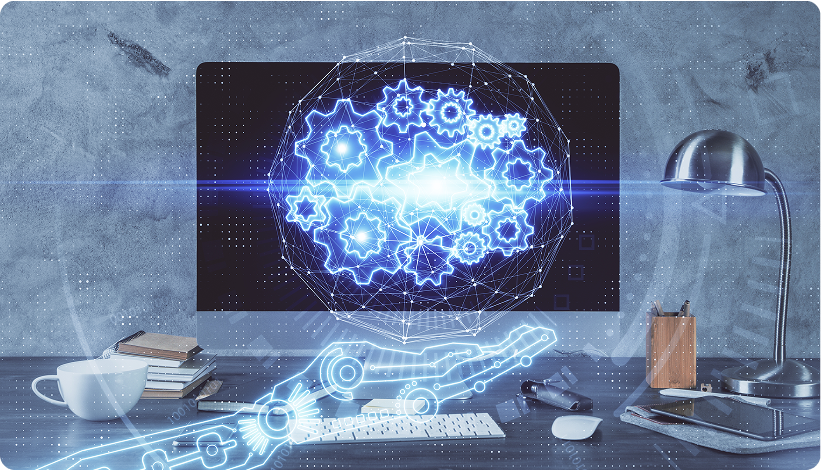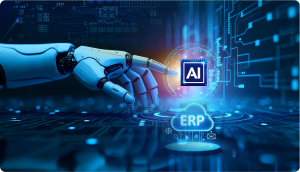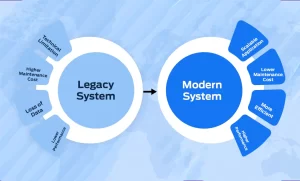
Introduction
Your business might be growing, your customers are changing, and your market is moving fast, but is your technology keeping up?
Many companies still use old systems, software and hardware that worked well years ago but now slow things down. These systems are usually hard to maintain, expensive to run, and don’t support new technology like AI or cloud tools. Updating these old systems isn’t just a tech upgrade, it’s a smart move to open up new possibilities, work more efficiently, and get your business ready for the future.
In this blog, we’ll look at why updating your legacy systems is important today and the key benefits of legacy system modernization you can expect when you make the change.
Why Modernization of Your Legacy System Matters Today
Legacy systems are like old roads, built a long time ago. They might still work, but they’re slow, break down often, and make it hard to move forward.
Here’s why modernizing them matters more than ever:
- Customer expectations are higher than ever. They want fast, seamless digital experiences.
- AI and automation are redefining operations. Legacy systems don’t support these advances.
- Cyber threats are more sophisticated. Outdated systems are vulnerable and hard to patch.
- New integrations are essential. Modern tools don’t always play well with old tech.
Simply put, you can’t afford to stay stuck. Let’s look at the benefits of modernizing legacy systems and how it can help every part of your business.

Key Benefits of Modernizing Legacy Systems
1. Reduce IT Complexity
As time goes on, legacy systems turn into a messy mix of fixes and add-ons. Every update or extra tool just adds more confusion. IT teams are left dealing with outdated code, tools that don’t work well together, and old systems that are hard to manage.
Modern systems make things much simpler. With cloud-based platforms, easy-to-build solutions, and better control, your tech setup becomes easier to handle. This means your IT team can spend less time fixing problems and more time working on new ideas.
According to Gartner, IT teams spend nearly 70% of their time maintaining existing systems rather than building new solutions. Modernization flips that ratio.
2. Cost Cuts in the Long Run
Yes, updating your old system costs money at the start, but it helps you save more in the long run.
Old systems usually need costly licenses, old hardware, special support, and use more power. Fixing problems or adding new features also takes a lot of time and money.
Modern systems, especially those on the cloud, are cheaper to run. You only pay for what you use, and you don’t need to buy or manage hardware. Plus, they’re easier to maintain.
Businesses can reduce operational costs by up to 30% after modernization, according to Architech.
3. Save Time and Increase Productivity
Old systems are slow, not just in speed, but in how they affect workflows. Employees spend more time toggling between systems, entering data manually, or waiting for processes to finish.
Modern applications streamline operations. They automate routine tasks, connect seamlessly with other tools, and offer faster processing, resulting in better output in less time.
Example: A logistics company cut down document processing time by 60% after moving from paper-based systems to a cloud-enabled platform.
4. Better User Experience
Legacy systems aren’t just hard on your team, they frustrate your customers too.
Outdated interfaces, poor mobile support, and slow response times drive users away. Modern systems are built to give a better experience. They have clean designs, are easy to use, work well on phones, and can be customized. This makes customers happier and helps employees work better.
Why it matters: A good user experience directly impacts customer retention and employee satisfaction.
5. Enhanced Security and Compliance
Cybersecurity threats are getting more advanced every day. Old systems, which were built before today’s security standards, are easier for hackers to attack or steal data from.
Modern systems have strong security features built in, like data protection, user access controls, automatic backups, and activity tracking. They’re also easier to keep up to date with the latest security fixes, helping you follow rules like GDPR, HIPAA, or SOC 2.
The average cost of a data breach in 2023 was $4.45 million. Investing in security upfront saves millions down the line.
6. To Upgrade as AI-Powered Solution
AI isn’t a thing of the future anymore, it’s already a big part of how businesses work today. From chatbots to smart data analysis and automation, AI can make your business faster and smarter.
But old systems can’t handle AI. Updating your technology makes it easier to connect with AI tools that help you make better decisions, give customers a more personal experience, and automate daily tasks.
Real-life example: Many shops now use AI to track stock, guess what customers will buy next, and avoid running out of products. This wasn’t possible with older software.
7. Easier Integration with Modern Tools
Businesses today use many tools like CRMs, ERPs, dashboards, and payment systems. Trying to connect these tools to an old system is like trying to plug a USB-C cable into a floppy disk, it just doesn’t fit.
Modern systems are built to easily connect with other tools. They allow smooth data sharing and real-time updates through things like APIs and cloud services.
Practical gain: Integration cuts down on double data entry, reduces errors, and ensures your team always works with the latest information.
8. Increased Scalability and Flexibility
As your business grows, your systems should grow with you. Legacy platforms often hit a ceiling, they can’t handle more users, larger datasets, or expanded operations without major rewrites.
Modern platforms, especially those built on the cloud, offer elastic scalability. Whether you’re adding 10 or 10,000 users, scaling up is just a click away. This flexibility lets you adapt to market demands without infrastructure headaches.
Benefit: You only pay for what you use, scale up during peak times and scale down when it’s quiet.

Common Challenges with Legacy Systems
Still wondering why companies move away from old systems? Here are some common problems they face:
Maintenance Complexity
Old systems often need special developers, outdated coding skills, or rare hardware. Even small updates can take weeks and cost a lot of money.
Security Risks
If the software is no longer supported, it can’t get important security updates. One weak spot can put your whole system at risk, leading to data loss, legal trouble, and a damaged reputation.
Integration Issues
Old systems don’t work well with modern tools like cloud apps, CRMs, or AI. This makes it harder to automate tasks and share data across teams.
Upgrade Your System with iTech
At iTech, we help turn old systems into fast, smart, and modern solutions that support your business growth.
Whether you need to move to the cloud, rebuild your system with simple tools, or fully upgrade everything, we’ll find the best solution for you, without interrupting your day-to-day work.
Start your legacy transformation journey with us today.
Get in touch for a free consultation and discover how modernization can reshape your digital future.
Final Thoughts
Modernizing your legacy systems isn’t just a technical decision, it’s a strategic one. From cost savings and productivity gains to enhanced security and scalability, the benefits are clear.
As the pace of change accelerates, businesses that cling to outdated systems will be left behind. Those that embrace modernization will be faster, smarter, and more prepared for whatever comes next.
So ask yourself: are your systems helping your business grow, or holding it back?
Now is the time to modernize.







